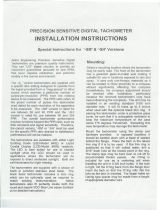Burster 8402 Series is a versatile miniature load cell designed for precise force measurement in a wide range of applications, especially in production equipment. It utilizes strain gauge technology to convert mechanical force into an electrical signal, providing reliable and accurate measurement data. The 8402 Series offers a compact design, high spring constant, and rapid measurement capabilities, making it suitable for dynamic and demanding measurement tasks.
Burster 8402 Series is a versatile miniature load cell designed for precise force measurement in a wide range of applications, especially in production equipment. It utilizes strain gauge technology to convert mechanical force into an electrical signal, providing reliable and accurate measurement data. The 8402 Series offers a compact design, high spring constant, and rapid measurement capabilities, making it suitable for dynamic and demanding measurement tasks.












-
 1
1
-
 2
2
-
 3
3
-
 4
4
-
 5
5
-
 6
6
-
 7
7
-
 8
8
-
 9
9
-
 10
10
-
 11
11
-
 12
12
Burster 8402 Series Owner's manual
- Type
- Owner's manual
- This manual is also suitable for
Burster 8402 Series is a versatile miniature load cell designed for precise force measurement in a wide range of applications, especially in production equipment. It utilizes strain gauge technology to convert mechanical force into an electrical signal, providing reliable and accurate measurement data. The 8402 Series offers a compact design, high spring constant, and rapid measurement capabilities, making it suitable for dynamic and demanding measurement tasks.
Ask a question and I''ll find the answer in the document
Finding information in a document is now easier with AI
Related papers
Other documents
-
Smartec VH Vibrating Wire Load Cell Owner's manual
-
Formax FD 540 User manual
-
 Kistler 9240AC3 Owner's manual
Kistler 9240AC3 Owner's manual
-
Snapper 07224 User manual
-
Air Lift AirCell 52202 Installation guide
-
Shimano RD-TY70 Service Instructions
-
Stanley ID07 Series User manual
-
 Aetna HP6492 User manual
Aetna HP6492 User manual
-
Cognex In-Sight 8402C Reference guide
-
Powr-Flite PFX3S User guide













